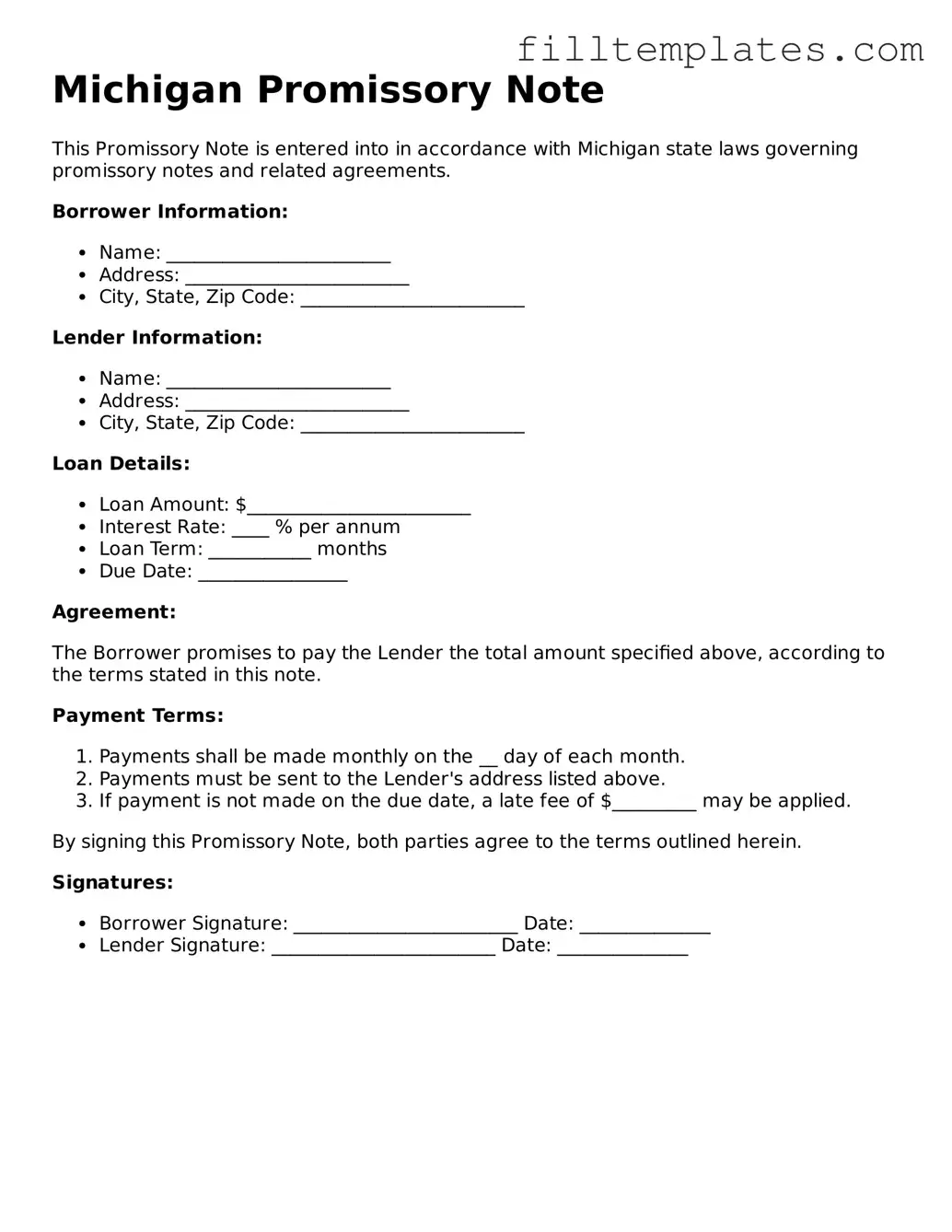Official Promissory Note Template for the State of Michigan
A Michigan Promissory Note is a legal document that outlines a borrower's promise to repay a specified amount of money to a lender under agreed-upon terms. This form serves as a crucial tool in financial transactions, ensuring clarity and accountability between parties. Understanding its components can help individuals navigate the lending process more effectively.
Open Promissory Note Editor
